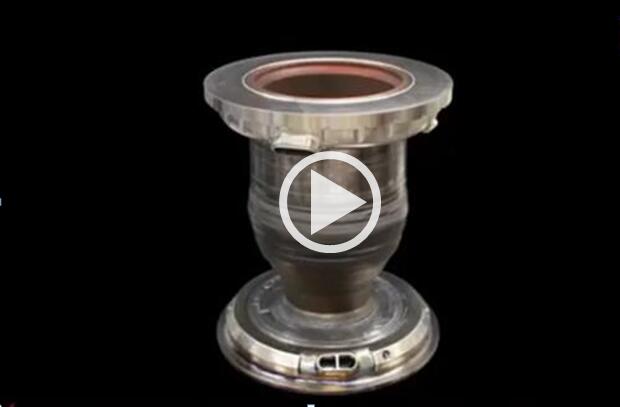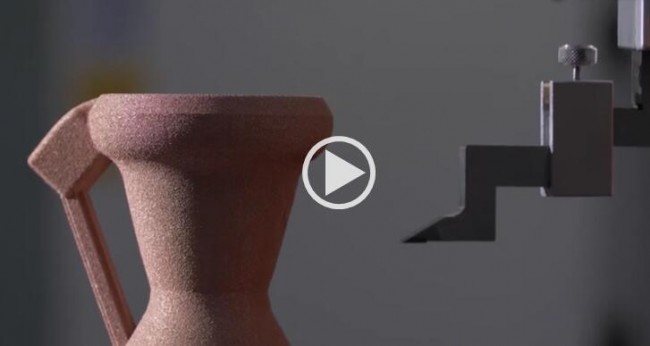Back in 2014, when NASA first tried to make rocket engine parts out of copper, engineers also worried that they might waste time.However, the latest results prove that the copper3D printingIt opened another door to the realization of economical rocket engine manufacturing.

Video: NASA’s LCUSP project. Source: NASA
![]() Complex cooling channels for next-generation engines
Complex cooling channels for next-generation engines
Copper does not seem to be suitable for3D printingTo process, because this kind of metal is easy to reflect directly3D printingMachine’s laser beam. The absorption rate of copper metal in the laser melting process is low, and it is difficult for the laser to continuously melt the copper metal powder, resulting in low forming efficiency and difficult control of metallurgical quality.
Following 2016 and 2017, NASA’s Marshall Space Flight Center3D printingAfter the GRCop-84 components were subjected to thermal tests, the team began to develop GRCop-42. NASA hopes that the material will have similar strength to GRCop-84, but with higher thermal conductivity. NASA researchers say that additively manufactured engine combustion chamber components made from this material will “surpass the previous generation of products manufactured in traditional methods.”
According to NASA’s LCUSP plan, NASA’s copper-based and nickel-based alloys3D printingThe technology has been developed so that the parts manufactured by these technologies pass the heat test.
but3D printingOne of the major challenges faced by combustion chambers made of copper alloys is how to withstand the combustion of rocket fuel at 6,000 degrees Fahrenheit. In order to prevent the copper from overheating, the rocket engineers designed a combustion chamber with complex tiny passages to dissipate heat by pumping coolant, thereby maintaining temperature balance and ensuring that the engine is not damaged.
There are more than 200 complicated channels between the inner and outer walls of the copper alloy combustion chamber components. Manufacturing these tiny internal channels with complex geometric shapes is a big challenge even for additive manufacturing technology. After the parts were printed, NASA researchers used electron beam equipment to coat them with a nickel-containing superalloy.
These complex channels are relatively slow and costly to achieve through traditional manufacturing processes.3D printingWill change this forever. NASA realizes these complicated internal passages through the selective laser melting equipment of Concept Laser under GE’s Concept Laser, and makes the design of the rocket engine more compact and lighter.
The challenge still exists,3D printingThe chamber walls and internal coolant channels are still not as smooth as NASA researchers hope. NASA is currently conducting several experiments to smooth these channels, or find a better way to smooth the surface by improving the printing process.
NASA’s achievements come from its cross-border integration in the fields of materials and rocket science. At NASA’s Glenn Research Center in Ohio, materials scientists add a little chromium and niobium to copper to increase metal strength and fatigue resistance.
NASA’s ultimate goal is to significantly increase the manufacturing speed of rocket engine parts while reducing manufacturing costs by at least 50%.
Many manufacturing companies are developing copper alloys3D printingCraft.Domestic metal3D printingThe company Blite has made progress in the field of copper metal laser forming, and has developed products for refractory metals and high thermal conductivity and high reflective metals3D printingProcess, realized the copper material manufacturing process of the complex runner, successfully prepared3D printingCopper alloy tail nozzle.Internationally, Aerojet Rocketdyne is in the rocket’s copper alloy thrust chamber3D printingThe breakthrough in the field has brought the possibility of manufacturing a new generation of RL10 engine.3D printingThe copper alloy thrust chamber components will replace the previous RL10C-1 thrust chamber components.The thrust chamber components to be replaced are manufactured by traditional technology and welded by multiple stainless steel parts.3D printingThe copper alloy thrust chamber component is composed of two copper alloy parts.

video:3D printingThe whole process of copper alloy rocket parts. Source: Launcher
Launcher, a start-up aerospace company, and its partners 3T and EOS also developed3D printingCopper alloy rocket engine parts,3D printingThe application of technology can reduce the number of engine parts, shorten development time, and make it easier to manufacture components with complex functions. The launcher developed3D printingCopper alloy (Cucrzr) engine components integrate complex cooling channels, and this design will improve engine cooling efficiency.
About copper3D printingUsing lasers, according to IDTechEx Research’s “Laser Diodes and Direct Diode Lasers, 2019-2029: Technology, Market and Forecasts” report, the average power of laser diodes has increased significantly over the past 30 years, while the average price per watt has decreased exponentially . Therefore, laser diodes are replacing some of the existing laser and non-laser technologies, while also making new optical technologies possible.
In 2018, Shimadzu Corporation intends (Japan) to commercialize its BLUE IMPACT blue impact diode laser. A key application of Shimadzu’s 450nm blue diode laser is the 3D printing of copper materials. Copper has a high absorption rate of blue laser, and the reduction of back reflection can make the processing process faster, which is a severe challenge to traditional infrared lasers. The newly developed 3D printer can print objects efficiently with pure copper powder. Existing 3D printer technology generally uses copper alloys such as CuCr1Zr to replace pure copper.
IDTechEx Research predicts that with the commercialization of more products, Blu-ray DDL will soon be applied to the field of copper processing from 2019.
(Editor in charge: admin)


0 Comments for “NASA uses 3D printing technology to achieve affordable rocket engine manufacturing”